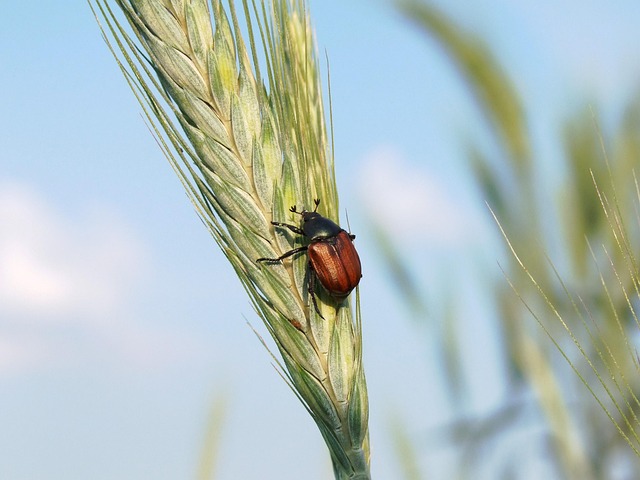Ant infestations from species like Caribbean crazy ants and odonthants are common household issues that thrive in warm, moist environments. Effective treatment requires understanding ant behaviors, such as pheromone trail following, to disrupt communication and reduce colony populations. Modern ant infestation treatments use precise applications of minimal toxic chemicals or biological agents, minimizing environmental impact. Cutting-edge technologies like drones and smart traps enable targeted treatments and real-time monitoring, preventing infestations from spreading. While these advanced solutions offer swift and efficient treatment, they come with higher costs and require specialized training. Homeowners should research options and consult specialists to choose a tailored method for effective prevention and control.
“Advanced pest control technologies are transforming the way we tackle persistent ant infestations, offering faster and longer-lasting results. This comprehensive guide delves into the world of ant behavior, exploring common types and their unique traits. We compare traditional methods with cutting-edge solutions, highlighting innovative technologies that revolutionize ant infestation treatment.
From smart sensors to targeted pesticides, these advanced strategies ensure effective control while considering environmental impacts. Discover the benefits and learn about implementation for a modern, efficient approach to ant infestation management.”
Understanding Ant Infestations: Common Types and Their Behavior
Ant infestations are a common household problem, with various species exhibiting distinct behaviors that can make them challenging to control. Understanding these types and their habits is crucial for effective ant infestation treatment. One of the most prevalent intruders is the Caribbean crazy ant (Nylanderia fulva), known for its rapid expansion and ability to displace native ant populations. They prefer warm environments, are attracted to moisture, and can enter homes through tiny cracks, creating nests in wall voids or under floorboards.
Another common type is the odonthant, often found outdoors but capable of entering buildings, especially in search of food. These ants follow pheromone trails left by their colony members, making it easier for them to find sources of food and expand their territory. Effective ant infestation treatment requires identifying these trails and using targeted treatments to disrupt communication, reduce population numbers, and prevent future invasions.
Traditional vs Advanced Pest Control Methods
In the battle against pests, traditional methods have long been the go-to solution for many homes and businesses. These conventional techniques often involve chemical pesticides that offer a quick fix but can leave behind harmful residues and pose risks to health and the environment. However, with advancements in technology, pest control has evolved to include advanced, innovative strategies that provide faster and longer-lasting results without compromising safety.
Advanced pest control technologies take a more precise and eco-friendly approach. For instance, modern ant infestation treatments utilise targeted applications of minimal toxic chemicals or even biological solutions like beneficial insects. These methods not only eliminate ant colonies but also reduce environmental impact. Additionally, advanced technology introduces faster detection systems, allowing professionals to identify pest problems at their earliest stages. This proactive approach ensures that pests are eradicated before they can multiply and cause significant damage.
Cutting-Edge Technologies for Effective Ant Infestation Treatment
In the quest for effective ant infestation treatment, cutting-edge technologies are transforming pest control. Drones equipped with high-resolution cameras and advanced sensors can survey large areas, identifying ant nests and trails with unprecedented accuracy. This technology enables targeted treatments, minimizing the use of pesticides and reducing environmental impact.
Additionally, innovative monitoring systems employ smart traps that transmit data in real-time. These traps detect pheromone signals, temperature changes, and other biological markers to alert technicians about active ant colonies. This proactive approach allows for swift intervention, preventing infestations from spreading. Such technologies are revolutionizing ant infestation treatment, ensuring faster and more lasting results while promoting sustainable pest management practices.
Benefits and Considerations of Implementing Advanced Pest Control Solutions
Implementing advanced pest control solutions offers a multitude of benefits for both homeowners and businesses dealing with unwanted intruders like ants. These cutting-edge technologies provide faster results compared to traditional methods, ensuring peace of mind and a more efficient approach to pest management. With precise applications and targeted treatments, professionals can locate ant infestations swiftly and employ eco-friendly chemicals or non-chemical alternatives to eliminate the problem at its source.
However, when considering advanced pest control, it’s essential to weigh the costs and potential drawbacks. While these solutions may be more expensive upfront, they offer long-lasting protection against future infestations. Additionally, some technologies require specialized training and equipment, necessitating the expertise of licensed professionals. Homeowners should research different options, consult with specialists, and choose a method suitable for their specific needs to achieve effective ant infestation treatment while considering both immediate results and sustained prevention.
Advanced pest control technologies offer a swift and effective solution for managing ant infestations, providing lasting results that traditional methods often struggle to match. By leveraging cutting-edge tools like smart sensors, targeted pesticides, and even genetic solutions, we can disrupt ant behavior and prevent future invasions. These innovative approaches not only enhance the efficiency of treatments but also minimize environmental impact. As we continue to navigate the challenges posed by pest resistance and evolving ecosystems, adopting these advanced technologies is crucial for ensuring effective ant infestation treatment while promoting a more sustainable future.
